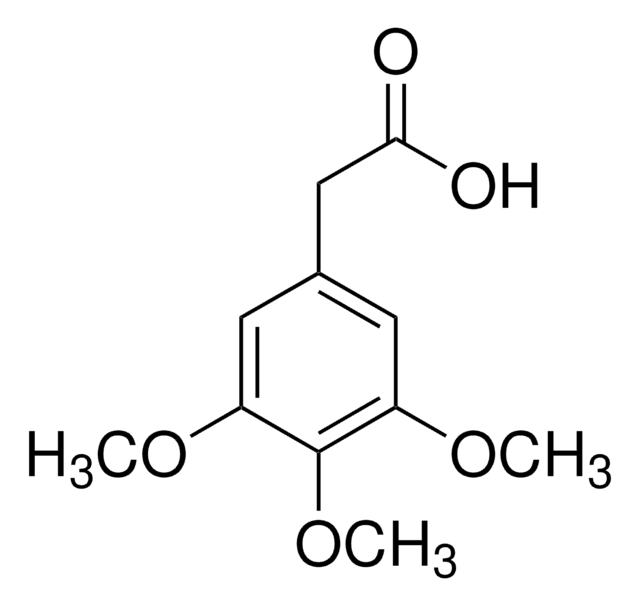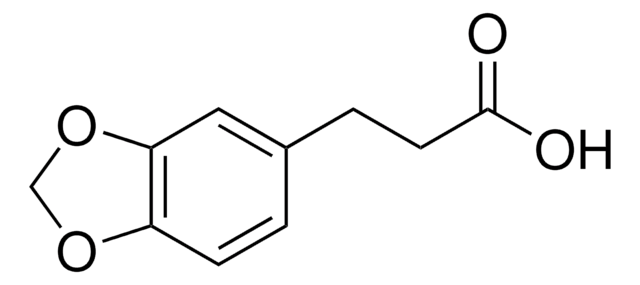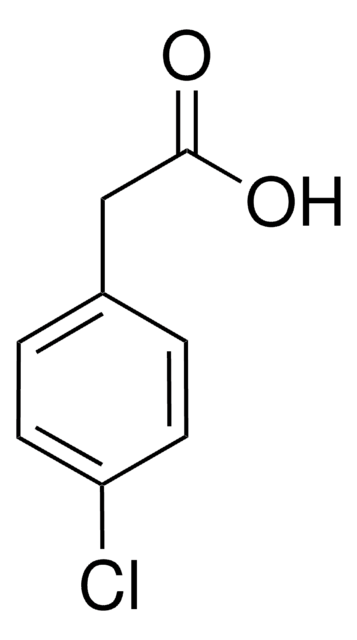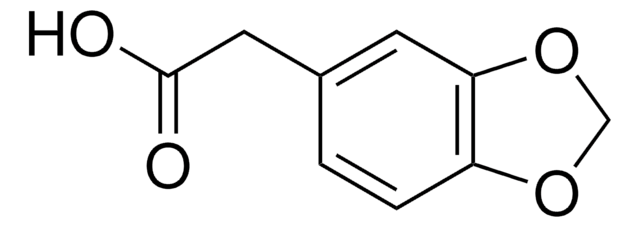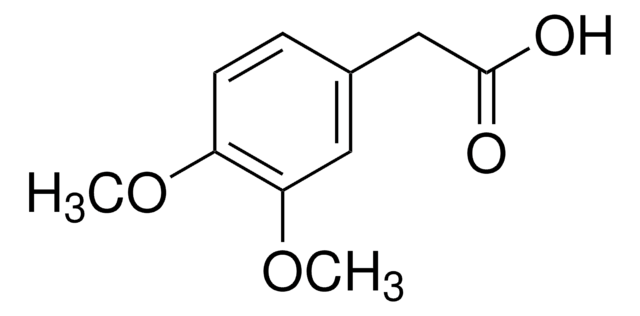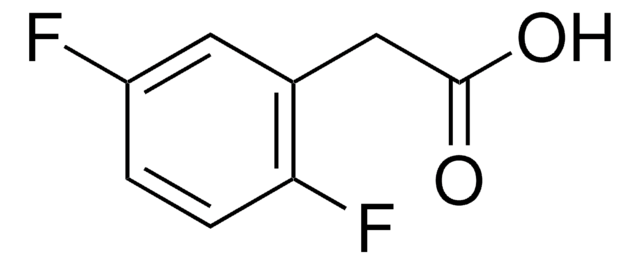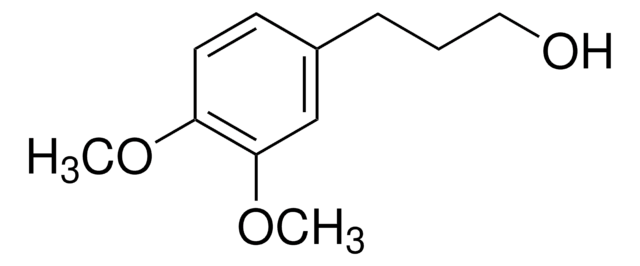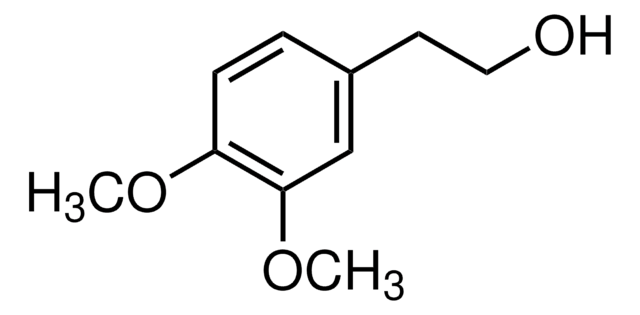All Photos(2)
About This Item
Linear Formula:
FC6H4CH2CO2H
CAS Number:
Molecular Weight:
154.14
Beilstein:
775955
EC Number:
MDL number:
UNSPSC Code:
12352100
PubChem Substance ID:
NACRES:
NA.22
Recommended Products
Assay
98%
form
solid
mp
60-62 °C (lit.)
functional group
carboxylic acid
fluoro
SMILES string
OC(=O)Cc1ccccc1F
InChI
1S/C8H7FO2/c9-7-4-2-1-3-6(7)5-8(10)11/h1-4H,5H2,(H,10,11)
InChI key
RPTRFSADOICSSK-UHFFFAOYSA-N
Looking for similar products? Visit Product Comparison Guide
General description
2-Fluorophenylacetic acid is chiral derivatizing agent for determination of enantiomeric composition of chiral, nonracemic compounds by 19F NMR spectroscopy.
Application
2-Fluorophenylacetic acid was used:
- in the synthesis of thiazolino[3,2-c]pyrimidin-5,7-diones and N-[2-(3,4-dichlorophenyl)-ethyl]-N′-[2-(2-fluorophenyl)-ethyl]-ethane-1,2-diamine
- as chiral derivatizing agent for determination of enantiomeric composition of chiral, nonracemic compounds by 19F NMR spectroscopy
Signal Word
Warning
Hazard Statements
Hazard Classifications
Skin Irrit. 2
Storage Class Code
11 - Combustible Solids
WGK
WGK 3
Personal Protective Equipment
dust mask type N95 (US), Eyeshields, Gloves
Choose from one of the most recent versions:
Already Own This Product?
Find documentation for the products that you have recently purchased in the Document Library.
Boron trifluoride-induced reactions of phenylglycidyl ethers: a convenient synthesis of enantiopure, stereodefined fluorohydrins.
Islas-Gonzalez G, et al.
Tetrahedron Letters, 45(33), 6337-6341 (2004)
Joseph Pontillo et al.
Bioorganic & medicinal chemistry letters, 15(5), 1407-1411 (2005-02-17)
Treatment of various 2-methyl oxazolines or thiazolines with chlorocarbonyl isocyanate gives the corresponding bicyclic oxazolino- or thiazolino[3,2-c]pyrimidin-5,7-dione derivatives in very good yield. This reaction has been applied to the rapid syntheses of human gonadotropin-releasing hormone (hGnRH) receptor antagonists for SAR
Jonathan M Fitzsimmons et al.
Medicinal chemistry, 1(102) (2011-12-25)
Eight halogenated
Yaqun Li et al.
The Korean journal of pain, 34(1), 27-34 (2021-01-01)
Chemotherapy-induced peripheral neuropathy (CIPN) is a major reason for stopping or changing anticancer therapy. Among the proposed pathomechanisms underlying CIPN, proinflammatory processes have attracted increasing attention. Here we assessed the role of prostaglandin D2 (PGD2) signaling in cisplatin-induced neuropathic pain.
Our team of scientists has experience in all areas of research including Life Science, Material Science, Chemical Synthesis, Chromatography, Analytical and many others.
Contact Technical Service
